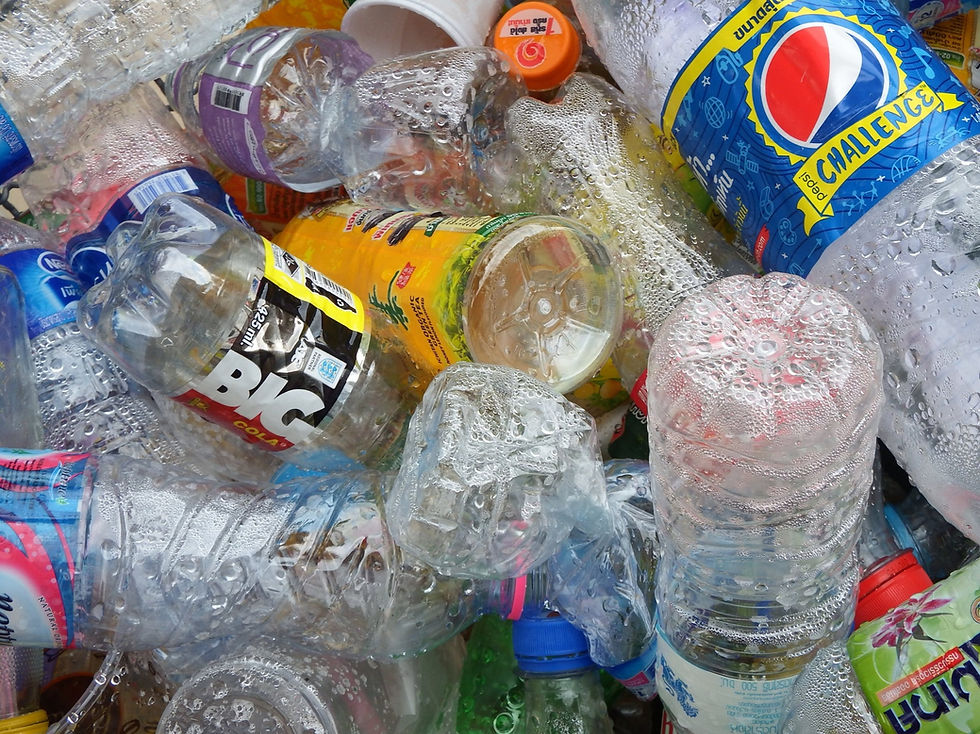Plastic Can Be Toxic!
- Gwen Walters
- Mar 14, 2017
- 2 min read

Previously I wrote about the danger of BPA which is found in water bottles and the insides of canned goods, among other things. Now I'd like to address the many faces of plastic, most of which are dirty ...
Most plastics are marked with a number, or recycling code, which indicates the type of resin used to create the plastic. The following list describes the plastic, its uses, and dangers to both you and the environment.
#1 PET or PETE (polyethylene terephthalate), also known as polyester
Typical Uses: Water and soft drink bottles; prepared salad and spinach containers
Health & Environmental Impacts: Intended for single use—plastic can break down and host bacteria; potential to interfere with reproductive hormones
#2 HDPE (high-density polyethylene)
Typical Uses: Opaque milk jugs; cereal box liners; liquid detergent bottles; most shampoo bottles
Health & Environmental Impacts: Low risk of leaching
#3 PVC (polyvinyl chloride)
Typical Uses: Plastic wrap, cooking oil bottles, toys, plumbing pipes, window and door frames, insulation (PVC foam)
Health & Environmental Impacts: Known as the “toxic plastic”; can cause endocrine disruption, reduced sperm count, testicular atrophy and liver cancer
#4 LDPE (low-density polyethylene)
Typical Uses: Plastic wrap; grocery, garbage and sandwich bags
Health & Environmental Impacts: Not known to leach chemicals
#5 PP (polypropylene)
Typical Uses: Yogurt and margarine tubs; microwavable meal trays; fiber for carpets, wall coverings and vehicle upholstery
Health & Environmental Impacts: Hazardous during manufacture but not known to leach chemicals
#6 PS (polystyrene)
Typical Uses: Styrofoam cups; clamshell containers; foam meat trays; plastic cutlery; electronics packaging; insulation
Health & Environmental Impacts:: Eye, nose and throat irritant; stored in body fat; can cause cancer in production workers; harmful to marine life
#7 PC (polycarbonate), PLA (polylactide) and any other plastic not included in categories above
Typical Uses: Baby bottles; some reusable water bottles; stain-resistant food-storage containers
Health & Environmental Impacts: BPA-containing polycarbonate causes endocrine and reproductive system disruption; impaired neurological functions; cancer; cardiovascular system damage; early puberty; obesity; chemotherapy resistance
What's a health-conscious person to do? First, switch to glassware---both for your food storage needs and to drink from. Invest in a good quality water filter such as a reverse osmosis machine and take your water with you in a stainless steel or glass container. Ditch the dirty water bottles once and for all!
Also, purchase larger containers of food items (like yogurt) and take your portion to work in a smaller glass container. Lastly, look for food items that are sold in glass containers instead of plastic bottles or tubs. You can also reuse the glass containers/bottles!
Cheers to your health! Check out my all natural (chemical-free) body products at www.AbundanceNaturals.com.



留言